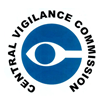Central Vigilance Commission adopted Integrity Pact: Key Facts
The Central Vigilance Commission has modified the Standard Operating Procedure (SOP) on adoption of “Integrity Pact” in government firm for purchase related activities.
What is the amended SOP?
As per the amended SOP:
- For appointed as Integrity External Monitors (IEMs), the Ministry, department or organisation worried has to forward a panel of suitable persons to the CVC, of those persons who are in the panel maintained by the Commission.
- Maximum tenure of IEMs: 3 years in an organisation.
What is an Integrity Pact?
The pact is to make sure equity, transparency and private enterprise in public procurement.
They were developed as a tool for block corruption in public contracting.
- It is a surveillance tool that anticipate an agreement between the prospective vendors/bidders and the buyer, performing both the parties not to exercise any corrupt influence on any aspect of the contract.
- It is a tool created by Transparency International.
Who are IEMs?
The Integrity Pact predicts a panel of Independent External Monitors (IEMs) for each organisation.
- IEM analysis freely and objectively, whether and to what expanse parties have observed with their obligations under the pact.
- They may consent a report to the chief executive of the firm concerned or directly to the CVO and the CVC, if they find significant irregularities attracting the Prevention of Corruption Act provisions.
What was India’s rank in Corruption Perception Index?
India ranked at 80th position in Corruption Perception Index 2020 prepared by Transparency International.
Which other countries shared India’s spot at the CPI?
The rank also shared by Benin, China, Ghana and Morocco
What are the causes of corruption in India?
Corruption in India is a result of the nexus connecting Bureaucracy, politics and criminals.
What are the consequences of Corruption in India?
- Increase in Unemployment
- Increase in Hunger and poverty
- Drop of Indian Economy Wealth
- Drop in growth of Indian Economy
- Strength and Jurisdiction in Wrong hands
- Brain Drain is largest result for India
- Emotional and Social Disorder
What are the steps taken by GoI to handle corruption in India?
The major step taken by GoI is demonetization i.e. prohibit 500 and 1000 rs notes which is the route of all problems, be it Corruption, Black Money, Terrorism. Under “Right to Information Act (RTI)”, citizens can now ask government about how the money is spent.
The “Jan Dhan yojana” & “Direct Benefit Transfer” schemes, bank accounts of millions of people were opened so that they can get assistance and benefits directly into their account. E-Auctions for spectrums and natural resources are nice steps towards a corruption less India.
Government is concentrating more on Digitizing, which will lead to more clarity in functioning of government. Government launched self-attestation of certificates and has pull out interviews from lower posts, so no one can bribe their way through interview to jobs. Another powerful check on corruption is Central Vigilance Commission (CVC). CVC was setup by the Government to counsel and guide Central Government organization in the areas of vigilance.
Month: Current Affairs - October, 2020


